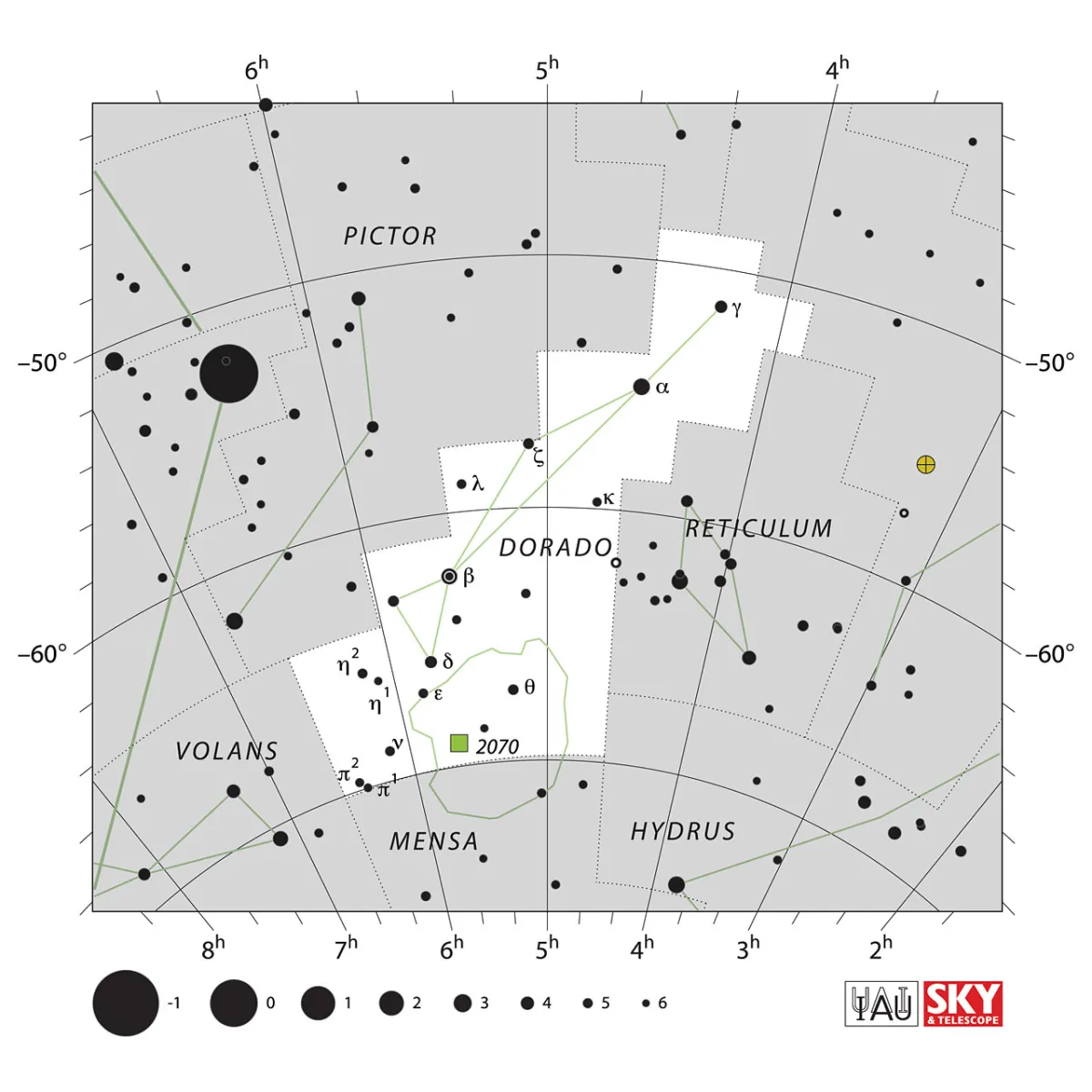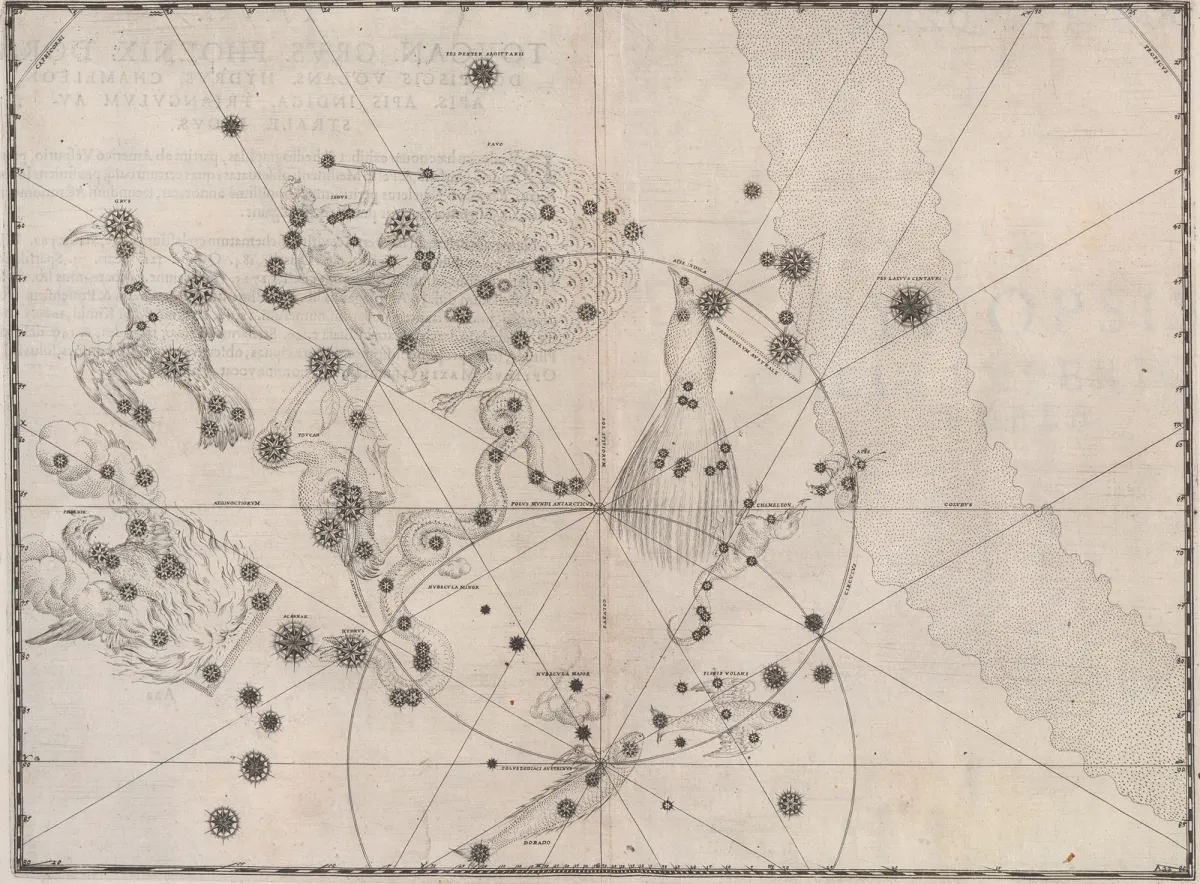Constellation Dorado (Swordfish)

Properties
The constellation is southeast of the bright star Canopus in the constellation Carina. The most striking feature is the Large Magellanic Cloud in the south of the constellation. This is the larger of the two companion systems in our galaxy. The Small Magellanic Cloud is located around 20 degrees further west in the constellation of Tucana. The constellation covers an area of 179 square degrees in the sky and culminates around midnight on December 7th, but is not visible from Europe. [9, 15]
| IAU Name | Dorado |
| IAU Genitive | Doradus |
| IAU Abbr. | Dor |
| English Name | Swordfish |
| Culmination at local midnight | 9 December |
| Season (Latitude +0.0°) | August … May |
| Right Ascension (J2000.0) | 03h 53m 17s … 06h 35m 45s |
| Declination (J2000.0) | -70° 06' 15" … -48° 40' 12" |
| Area | 179 deg2 |
| Neighbours (N↻) | Cae, Hor, Ret, Hyi, Men, Vol, Pic |
Deep-Sky Object Descriptions
Catalogues

History
The constellation was first listed in 1603 by Johann Bayer in his Uranometria. It represents either a goldfish or a swordfish. [7]